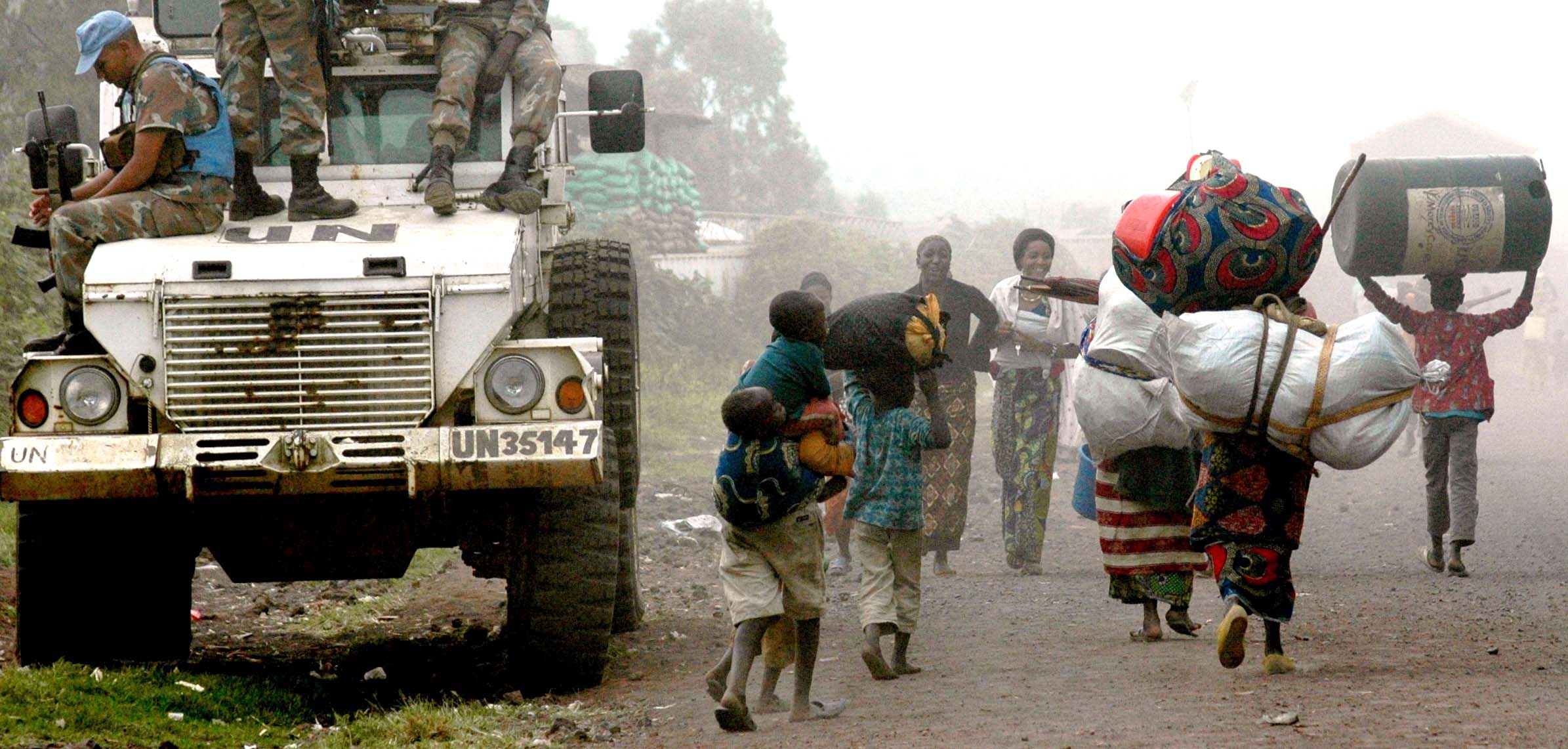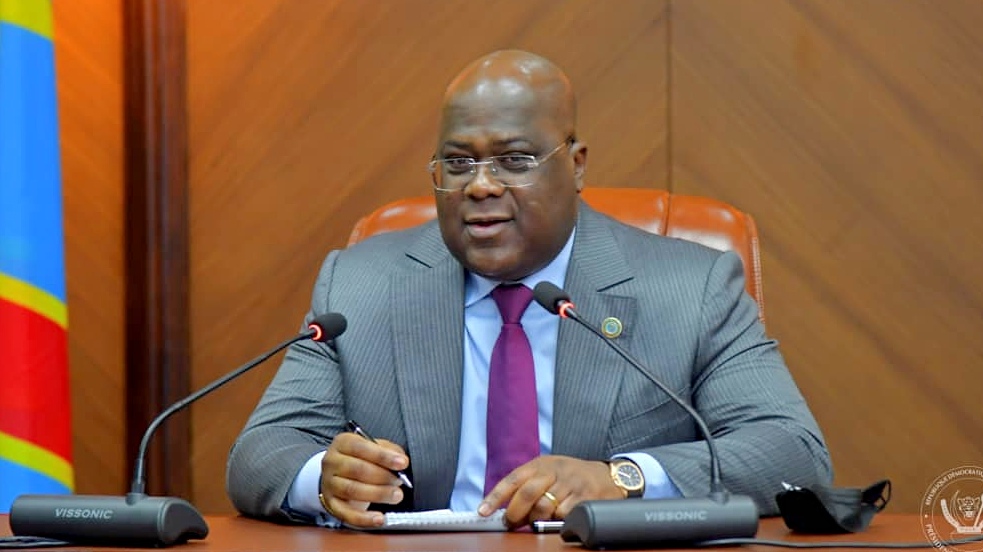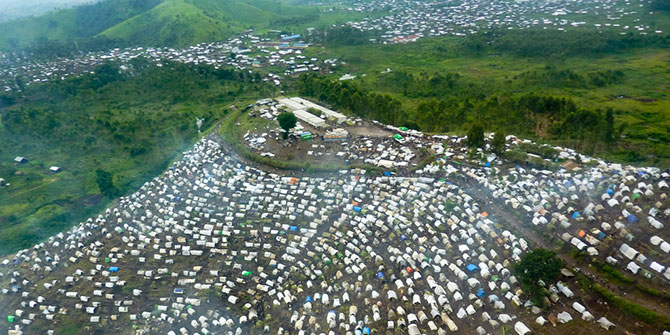The city of Goma in the east of the Democratic Republic of Congo has been under a state of siege since 2021. In this article, Professor Karen Büscher and David Bilembo, reflect on the effects this has had on the city and its inhabitants.
“When the state of siege was introduced, no one here knew exactly what that actually meant. ‘Etat de siège,’ the magic word that would bring security and order, was thrown on the table like a joker, bam! In the meantime, a year and a half have passed, and it is beginning to dawn on us that the people who put that card on the table in fact hardly seemed to know themselves what it exactly means in the game of politics and administration”- University student, Goma, 13 December 2022.
In the year and a half since the state of siege was declared little has changed in terms of security. Armed robberies, kidnappings and extortions are still commonplace. The M23 armed group has advanced to 70km of the city, and the resulting civilian casualties have dominated Congolese political debate and brought global attention back to the conflict in eastern Congo.
Despite that, the effects of militarisation are increasingly clear in people’s day-to-day lives. The governor has been replaced by a general, and the mayor by a police commissioner. Martial law and curfews have been imposed and military uniforms dominate urban life.
Civilians – military, a complicated affair
Due to the increased number of military and police units in the city and their positions at the head of all administrative bodies at the provincial, urban, and municipal levels, one might expect a new ‘élan’ for the uniform. However, the occasional acknowledgement of their contribution to order and efficiency is offset by the lack of any structural change in terms of security and protection.
“In the start of it all, literally everyone was inside. I mean literally everyone: officials, citizens, and even the criminals. It was as if we all waited to see what would happen eventually. But the criminals seemed to be the least patient. It didn’t take long before they were back from never having been away.” Bar owner, Goma (13 December 2022)
The phenomenon of the infamous “forty robbers,” who terrorise neighbourhoods with armed robberies creates a general feeling of insecurity from the moment the sun goes down and people leave the city centre. “So no,” says José, the owner of a popular buvette in one of the city’s suburbs; “the army boots in our streets have not changed the relationship between the civilians and the military. On the contrary. Who can expect us to have any faith in this state of siege ‘affair’ when our children can’t even safely walk home from school?”
The dominant perception of the police remains that they are predatory, underpaid and left to fend for themselves off the backs of civilians. The expanded responsibilities of military personnel have not reversed the mistrust between citizens and the security forces.
Order and contradiction
On a visit to the town hall for the obligatory signing of our mission order (a required document for conducting fieldwork in Goma), we were stopped at the gate, which is extensively guarded by security agents who check everyone who wants to enter or leave. Despite the increased securitisation, opinions about the new city administration are certainly not entirely negative. Emilie tells me that she only had to wait three days for her youngest son’s birth certificate, a record for her family.
“You have to them credit for bringing order and structure to the offices of the town hall. For them, things need to move, preferably quickly, without too much fuss. They naturally want to represent discipline with their uniforms, at least at the exterior of the municipal premises, and as citizens, we can actually sometimes benefit from that.”
I hear similar stories about the way things are being organised at the border crossing, in the port and in the main market. There is even talk of a significant increase in tax revenues by maintaining ‘order and structure’ (read: ‘cleaning up’ the maze of corrupt government services). There are no more annoying roadblocks to get to the port, and when around the Christmas period the main roads are usually flanked by pushy ‘roulages‘ (traffic police) looking for some extra income, now they are remarkably absent.
‘La ville morte’ and the militarisation of public space
Over the years, Goma has experienced a steady militarisation of its urban space; armed security services (from private security operatives to UN blue helmets) dominate the streetscape and the public spaces have been gradually taken over by UN compounds or parcelled out for luxury villas of the high-ranking military elite.
The state of siege has enriched the upper echelons of the local military, but the pitiful wages for the common soldier remain unchanged. The contrast is visually obscene: while the real estate projects of generals mushroom all over the city, the ordinary soldiers and their families find refuge in an improvised tent city on the flanks of Mount Goma.
Gigantic billboards along the side of the main roads display images of the president or the provincial deputies in camouflage outfits and slogans such as ‘FARDC pour le peuple et la patrie’ (the army for the people and the homeland) or ‘soutien total aux FARDC’ (total support for the army).
But perhaps the ‘state of siege’ is mostly reflected in what can no longer be seen: the once regular street protests. Arrests and violent crackdowns by the police have put an end to urban civil protest. Mostly led by youngsters, roundabouts were blocked, and calls were made for the ‘ville morte’ (a general strike or boycott). There were also occasional protests against the state of siege. This ‘ville morte’ is no longer a strategy of civil disobedience; adopted by the military as a strategy of armed repression, it is reduced to its literal translation: a dead city.
Take matters into our own hands
In stark contrast to the absence of public civil protest is the presence of a strong willingness by the urban youth to take up arms ‘to defend the country against the enemy.’ President Tshisekedi’s calls to Congolese youth in November last year to join the army to defeat the M23 rebels were heard in Goma, with hundreds of boys and girls queuing to enlist. But many young people prefer to ignore that uniform and take up arms for one of the many non-state armed groups that fight against ‘the enemy’ at the front. Never before have I heard university students talk so openly about their voluntary mobilization for what they call ‘self-defence’ groups on the front.
“The massacre in Kishihse, for you guys that is all theory and news facts, for us it is revolting, emotional, . . . you have to experience war to understand that, how we as intellectuals at the university take matters into our own hands, lay down our books to take up arms.” University Student in Goma, 15 December 2022.
Urban centres in Eastern Congo (as in other conflict zones) are often seen as islands of stability, progressive cosmopolitan bastions, laboratories of new identities and new forms of civil protest. But in Goma, we observe more and more how the ‘logic of the gun’ has become a dominant and widely supported narrative. Those same young people who would prefer to see the state of siege suspended, are themselves in a state of explicit readiness to take up arms and have become the embodiment of their own critique: the profound militarisation of an urban society.
Photo credit: United Nations Photo used under CC BY-NC-ND 2.0.





